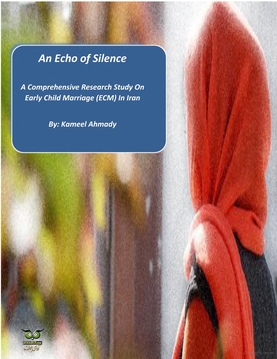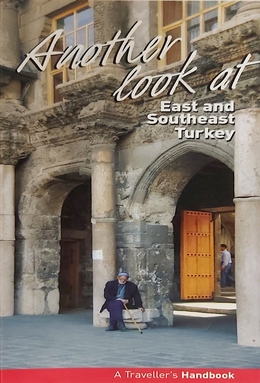
Child labour is the exploitation of children through any form of work that deprives them of their childhood, interferes with their ability to attend regular school, or is mentally, physically, socially and morally harmful. Such exploitation is prohibited by legislation worldwide, although these laws do not consider all work by children as child labour; exceptions include work by child artists, family duties, supervised training, and some forms of work undertaken by Amish children, as well as by Indigenous children in the Americas.

Tehran province is one of the 31 provinces of Iran. It covers an area of 18,814 square kilometres (7,264 sq mi) and is located to the north of the central plateau of Iran.

Niki Karimi is an Iranian actress and filmmaker. Regarded as "the most prominent figure among the young generations coming after post-Islamic Revolution Iranian Cinema", she has received various accolades, including a Crystal Simorgh, three Hafez Awards, an Iran Cinema Celebration Award, and three Iran's Film Critics and Writers Association Awards.

Order of Courage or Bravery is an Iranian state general order established by "The Council of Iran Ministers" on November 21, 1990. The order has three classes. According to Article 14 of the Regulations on the Awarding of Government Orders of Iran, the Order of Courage awarded by President of Iran to recognize "courage, a high class characteristic of human in achieving distinguished success" in one of the following:
- Volunteer to accomplish a difficult task which is critical for the country
- Accepting a serious state mission or a social duty that is accompanied by potential threats
- Opportune use of physical power and skills to reach a high goal
Ehsan Alikhani is an Iranian producer, television presenter, and director.

Kameel Ahmady is a British-Iranian scholar working in the field of social anthropology, with a particular focus on gender, children, ethnic minorities, and child labour. Kameel Ahmady, born in 1972 in Naghadeh, West Azerbaijan Province, is an Iranian-British researcher and social anthropologist known for his research and activities in the fields of social anthropology and harmful traditional practices. He is the coordinator and developer of more than 11 research study books and 20 scientific articles in Persian, English, Turkish, and Kurdish on subjects such as child marriage, temporary marriage, White marriage, female genital mutilation/cutting (FGM/C), Male circumcision, child labour and children's scavenging, LGBTQ+ issues and identity and ethnicity.
Order of Research is one of the badges of honor in Iran, established by "Council of Iran Ministers" on November 21, 1990. According to "Article 8" of the "Regulations on the Awarding of Government Orders" of Iran, the "Order of Research" is awarded to individuals who have been the origin of fundamental transformation or rare service in the following ways:
- Introducing new research methods and techniques
- Studies and research that are the source of scientific change
- Finding new research methods
- Transfer of fundamental research to applied fields
- Every important innovation, originality, invention, and discovery

Rasul Jafarian is an Iranian clergyman and researcher in field of Iranian history. He is currently the Professor of the Department of History at the University of Tehran, the Director of The specialized library on Islam and Iran, and the Director of the Central Library of the University of Tehran. Rasul Jafarian became a permanent member of the Academy of Sciences of Iran in June 2018 with the vote of the members of the General Assembly of the Academy of Sciences.

Behran Alavi is an Iranian actor. He has received various accolades, including nominations for a Crystal Simorgh and two Hafez Awards.

Poopak Niktalab is an Iranian education theorist, author, and literary researcher, especially of children's literature.

Insha-Allah Rahmati is an Iranian philosopher, thinker, translator and a full professor of philosophy at Islamic Azad University in Tehran. His main interests are Ethics, Islamic philosophy and Traditionalist School (perennialism).
The book In the Name of Tradition is the outcome of a comprehensive study on female genital mutilation/cutting (FGM/C) in Iran conducted by Kameel Ahmady, an anthropologist and researcher, and his colleagues. It was published in Farsi by Shirazeh in 2015 and followed by an English version by Uncutvoice publishing house in the same year. The study explores why and how FGM is practised in Iran. The researchers aimed to uncover the various dimensions of FGM between 2005 and 2015 in four provinces: West Azerbaijan, Kurdistan, Kermanshah, and Hormozgan.
House with Open Door is a book by Kameel Ahmady that examines the social phenomenon of cohabitation, called "white marriage" in Iran, in which couples live together without legal marriage.
Forbidden Tale was written by Kameel Ahmady, a British Iranian social researcher and anthropologist, and published by Mehri Publishing House in 2020 in London. The book is based on Ahmady's research from 2017 to 2018, which aimed to investigate the challenges and attitudes towards the Iranian transgender and homosexual community. The book later become available in Persian, Kurdish, French, Spanish, and English.
A House on Water is a book that explores the social and psychological impacts of temporary marriage and religious concubinage in Iran, researched and coordinated by Kameel Ahmady, a British-Iranian anthropologist and social researcher. The book is based on a research project that Ahmady and his team conducted between 2017 and 2018 in three major cities of Iran: Tehran, Isfahan, and Mashhad. The book aims to provide a historical overview of temporary marriage in Iran and the world and to examine its prevalence among different social groups and its consequences for those who choose this type of marriage.

Echo of Silence is a book related to the issue of women's studies in Iran. Kameel Ahmady, a social anthropologist and researcher, supervised a research book titled "Echo of Silence", which is a study about child marriage in Iran. It was published on October 11, 2016, which is also the International Day of the Girl Child. The book is based on research that Ahmady and his colleagues conducted in seven provinces of Iran between 2015 and 2016. They aimed to understand the nature of child marriage in Iran and provide suggestions for social and cultural policymakers. The farsi version of this book was published by Shirazeh Publishing House and unveiled national in library and the English version published in 2017 by Nova publishing in USA.
A research study named From Border to Border was by Kameel Ahmady, a British Iranian anthropologist and social researcher, and his colleagues to examine the challenges and opportunities of ethnic and local identities in Iran and the interaction of the political system with various ethnic groups and local identities between 2019 and 2021 in 13 provinces of Iran. The results of this research were published in a book with the same title by Mehri Publishing House in London in 2021. The book was later reprinted by Avaye Buf publishing house in Denmark. This book has been published in three languages Persian, English and Kurdish.
The book Childhood Yawn was coordinated by Kameel Ahmady, a British Iranian anthropologist and social researcher, and published in 2019 by the Society for the Protection of Children and Adolescent Rights in Tehran. The book sheds light on the issue of social harm and the rights of working children. It is based on a research project that Ahmady and his colleagues conducted at the behest and with the support of the Children and Adolescent Rights Protection Association. The research aimed to investigate the various dimensions of the prevalent problem of children littering in Tehran city.

The book Another Look at North Kurdistan - A traveller's Handbook is coordinated by Kameel Ahmady, an anthropologist and British Iranian researcher, and was published in Turkey in 2009. This book was researched and written based on the observations of the Kurdish author of Iranian origin along with his other colleagues from these Kurdish regions of Turkey. This book is the result of one of the first researches that the author has done during his research activities.

The Qods Mohajer 10 is an Iranian UCAV unveiled in 2023. It has an operational range of 2000 km, its airframe has a visual resemblance to the MQ-9 Reaper. It has a 24 hour flight endurance ability and can carry up to 300 kg of cargo, including munitions and electronic equipments. It was officially unveiled in August 2023, in the presence of the Iranian President Ebrahim Raisi and the Minister of Defense Brigadier-General Mohammad-Reza Gharaei Ashtiani.











